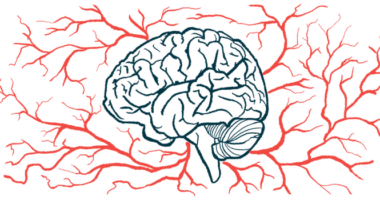‘Brain-Gut Axis’ May Be What Links Stress and Crises in SCD Patients

Microbes in the gut play a key role in inducing vaso-occlusive crises (VOCs) in response to stress, a study in mice suggests.
Stress is known to trigger VOCs in people with sickle cell disease (SCD) and inflammation in those with cardiovascular disease, but in ways not fully understood. Researchers now identify a possible “brain-gut axis” linking the two.
The study, “The Gut Microbiome Regulates Psychological-Stress-Induced Inflammation,” was published in the journal Immunity.
Red blood cells in SCD patients take a “sickled” shape that clogs small blood vessels and prevents oxygen from reaching tissues. This causes VOCs, which are prolonged and painful episodes that may lead to significant organ damage, and result in hospitalization.
Using a mouse model, scientists at Albert Einstein College of Medicine charted the path that ends in VOCs from the brain down through to the gut.
Using physical restraint to induce stress in these mice, the team found that the brain releases hormones called glucocorticoids. These steroids, normally meant to counteract inflammation, caused the intestinal walls to become more permeable, or leakier.
As a result, a beneficial type of mouse bacteria called segmented filamentous bacteria, or SFB, moved into the lining of the gut, where they interacted with inflammatory cells of the immune system called Th17 cells.
To their surprise, the investigators found that these immune cells were triggered to release the pro-inflammatory molecules interleukin-17A (IL-17A) and G-CSF into the bloodstream. This promoted the aging and accumulation of immune white blood cells known as neutrophils.
“Our results … suggest that glucocorticoid release after stress increases gut permeability, allowing Th17-cell-inducing commensals to stimulate a Th17 cell response in sickle cell mice,” they wrote.
The same research team had previously discovered that gut microbes regulate neutrophil aging, inflammation, and VOCs.
Researchers observed this chain of events in both healthy mice and those mimicking symptoms of SCD. But VOCs were only seen in the mouse model of SCD, as the controls did not have sickled blood cells or aged neutrophils.
Further validating their findings, the scientists observed that inducing stress in animals genetically engineered to lack Th17 immune cells did not result in a similar accumulation of aged neutrophils. This supported Th17 cells as the source of IL-17A and other inflammatory molecules.
“Importantly, we found we could markedly reduce stress-induced VOE [vaso-occlusive episodes] in mice through several different interventions: inhibiting the synthesis of glucocorticoids, depleting SFB, or blocking the inflammatory molecules induced by these bacteria,” Paul Frenette, MD the study’s senior author, said in a university press release.
“Each of those actions could potentially limit the impact of psychological stress on people with SCD,” he added.
Although SFB are only found in rodents, other studies suggest similar beneficial microbes exist in the human gut that may also prompt the release of inflammatory molecules from Th17 cells.
“VOEs are the most common manifestation of SCD,” the researchers wrote, but lack a treatment able to reverse them. Preventative measures, they added, “may have the potential to provide the greatest clinical benefit.”
These results “elucidate a brain-gut axis that regulates stress-induced inflammation,” the team concluded. “Efforts to manipulate Th17-cell-inducing [bacteria] or prevent stress-induced gut permeability may provide promising approaches to contain the activity of SCD and potentially other cardiovascular diseases.”






